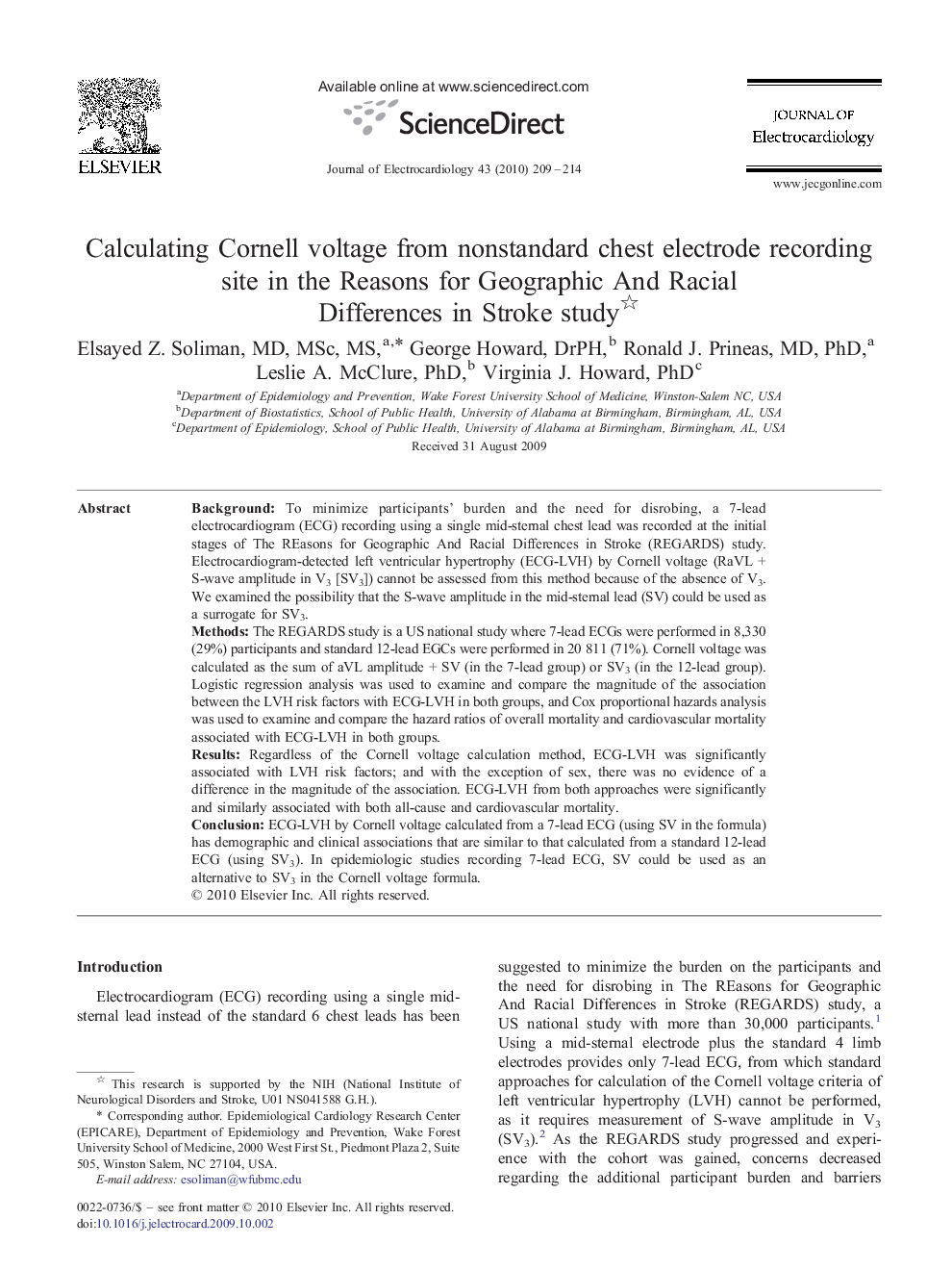| کد مقاله | کد نشریه | سال انتشار | مقاله انگلیسی | نسخه تمام متن |
|---|---|---|---|---|
| 2968599 | 1178880 | 2010 | 6 صفحه PDF | دانلود رایگان |

BackgroundTo minimize participants' burden and the need for disrobing, a 7-lead electrocardiogram (ECG) recording using a single mid-sternal chest lead was recorded at the initial stages of The REasons for Geographic And Racial Differences in Stroke (REGARDS) study. Electrocardiogram-detected left ventricular hypertrophy (ECG-LVH) by Cornell voltage (RaVL + S-wave amplitude in V3 [SV3]) cannot be assessed from this method because of the absence of V3. We examined the possibility that the S-wave amplitude in the mid-sternal lead (SV) could be used as a surrogate for SV3.MethodsThe REGARDS study is a US national study where 7-lead ECGs were performed in 8,330 (29%) participants and standard 12-lead EGCs were performed in 20 811 (71%). Cornell voltage was calculated as the sum of aVL amplitude + SV (in the 7-lead group) or SV3 (in the 12-lead group). Logistic regression analysis was used to examine and compare the magnitude of the association between the LVH risk factors with ECG-LVH in both groups, and Cox proportional hazards analysis was used to examine and compare the hazard ratios of overall mortality and cardiovascular mortality associated with ECG-LVH in both groups.ResultsRegardless of the Cornell voltage calculation method, ECG-LVH was significantly associated with LVH risk factors; and with the exception of sex, there was no evidence of a difference in the magnitude of the association. ECG-LVH from both approaches were significantly and similarly associated with both all-cause and cardiovascular mortality.ConclusionECG-LVH by Cornell voltage calculated from a 7-lead ECG (using SV in the formula) has demographic and clinical associations that are similar to that calculated from a standard 12-lead ECG (using SV3). In epidemiologic studies recording 7-lead ECG, SV could be used as an alternative to SV3 in the Cornell voltage formula.
Journal: Journal of Electrocardiology - Volume 43, Issue 3, May–June 2010, Pages 209–214